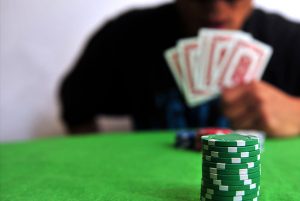 How to exploit the opponent in practice while playing poker? To make it simpler, let's imagine you are playing a heads-up game. Let's say the flop or turn is revealed. Your current hand is not important now – remember, we are thinking about your hand range and the opponent's hand range.
How to exploit the opponent in practice while playing poker? To make it simpler, let's imagine you are playing a heads-up game. Let's say the flop or turn is revealed. Your current hand is not important now – remember, we are thinking about your hand range and the opponent's hand range.
The main question here is: how do we balance our game (range) to best exploit the opponent?
Easier said than done. This question forces us to consider the following questions. What weaknesses in the opponent's game can we exploit? How does he distribute good hands? Are all his hands really good? This question requires integrating all available information about the opponent to narrow down his hand range. It also invites us to consider psychological aspects, such as how the other player's bets look when he has a good hand.
Remember, we want to track the opponent's good hands as clearly as possible, paying all possible attention to them and their movement in the opponent's game. The other player's good hands will show us where his game is strong and established. As soon as he deviates from his usual game flow, we will know he is weak.
For example, if he always makes such moves as check-raise and plays quickly with good hands when the flop cards are revealed, but does not behave this way during this hand, it can be understood that he is currently weak, and when the turn is revealed, you will know that you need to attack him strongly. After all, you want to arrange your entire hand range so that you can attack the opponent where he is weak and protect your hands from his strong hand range. This is a very simple example, but it shows a holistic approach to exploiting the opponent.
If you are an advanced poker player, these ideas will probably seem intuitive and long-known to you, but understanding these fundamental concepts clearly and in understandable language is essential to move on to bigger and more complex ideas.





